Faroe Islands Nature & Wildlife

Tourism Sites
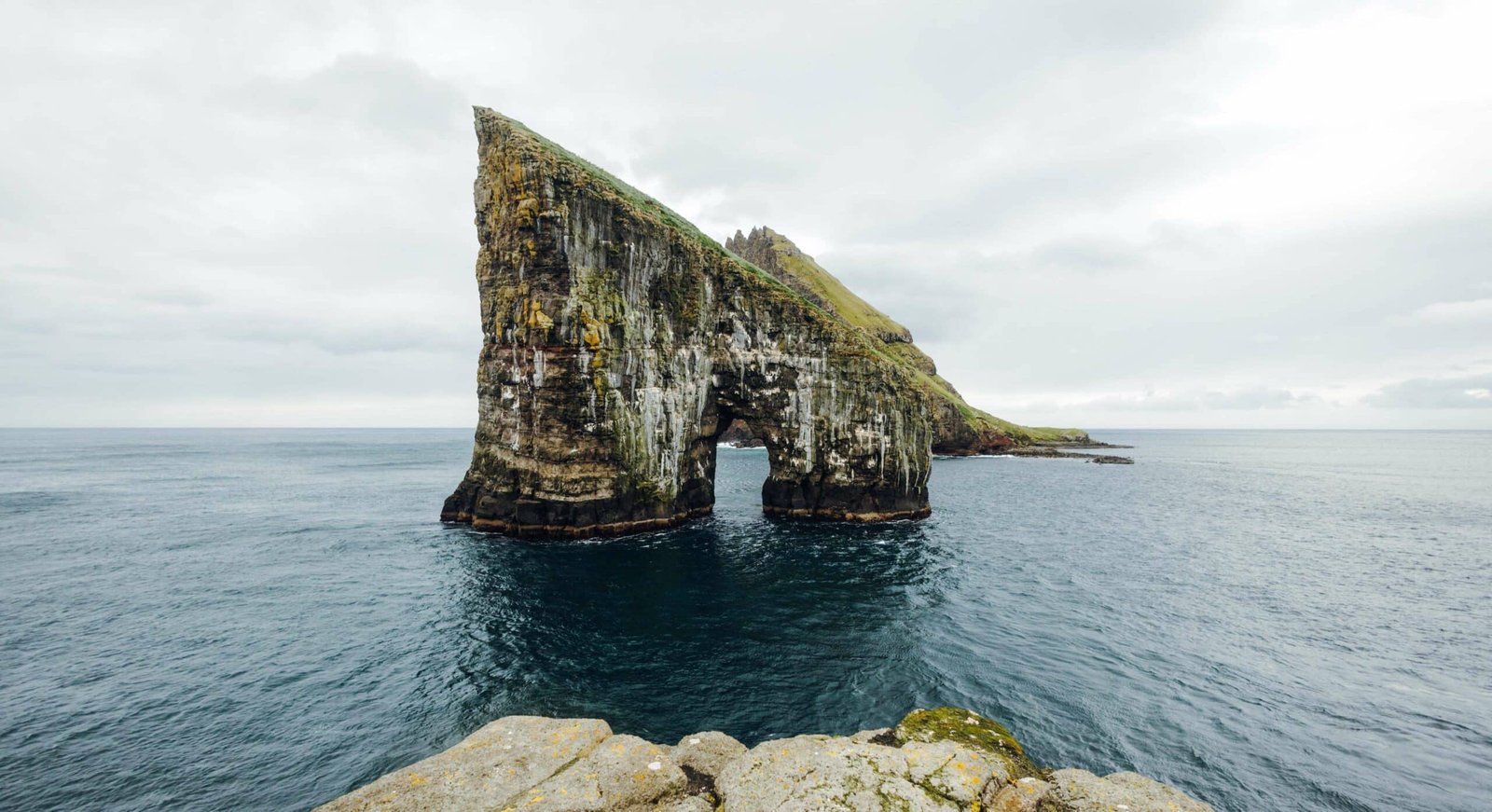
Drangarnir Sea Stacks
🧠 Fact: : Two iconic sea stacks, Stóri Drangur and Lítli Drangur, situated between Vágar and Tindhólmur
💡 Tip: Access requires permission; consider joining a guided tour for safe and legal entry.
Info - The Drangarnir Sea Stacks, featuring the impressive arch-shaped Stóri Drangur and its companion Lítli Drangur, are some of the Faroe Islands’ most photographed formations. Rising dramatically from the North Atlantic between Vágar and Tindhólmur, these towering sea stacks can be admired by boat or via a challenging hike. The rugged cliffs, changing light, and birdlife enhance the stark beauty of the scene. It's a prime spot for adventurous photographers and those seeking the raw, unspoiled landscapes the Faroes are famed for.
- 📍 Faroe Islands
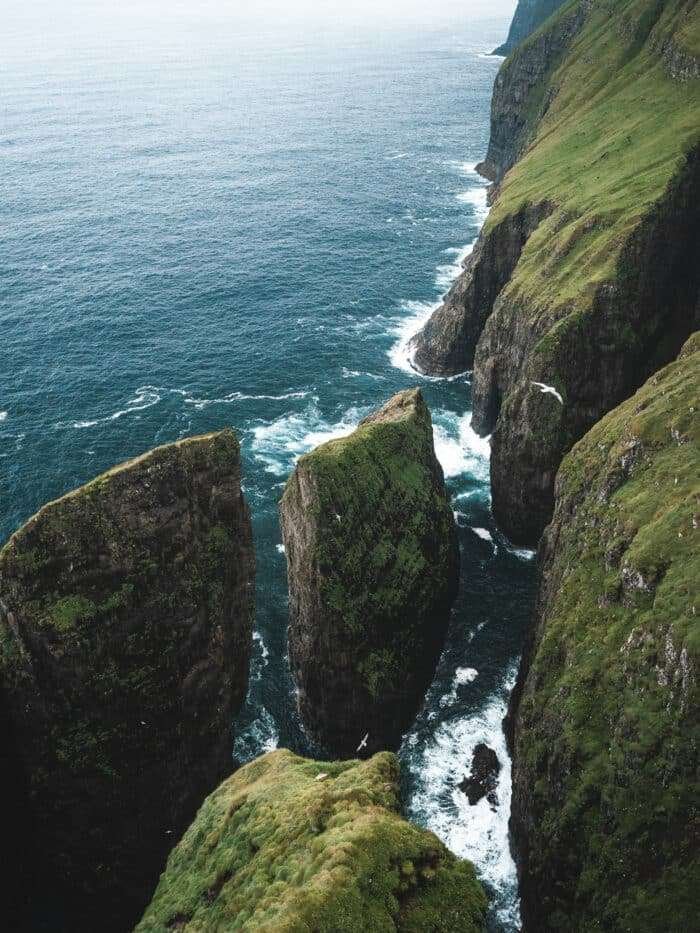
Dunnesdrangar
🧠 Fact: : A dramatic rock pillar rising from the sea, offering spectacular coastal views.
💡 Tip: Embark on a guided hike to safely navigate the terrain and learn about local legends
Info - Dunnesdrangar is a dramatic pair of sharp, jagged sea stacks soaring from the waves off Streymoy’s northwest coast. Less famous but equally mesmerizing as other Faroese formations, these isolated rock towers seem to defy gravity against the relentless Atlantic swell. Viewed best from nearby cliffs or by boat, they stand as timeless monuments to the island’s geological past. The surrounding cliffs, seabirds circling overhead, and the roar of the ocean create an atmosphere of untamed, elemental power.
- 📍 Faroe Islands
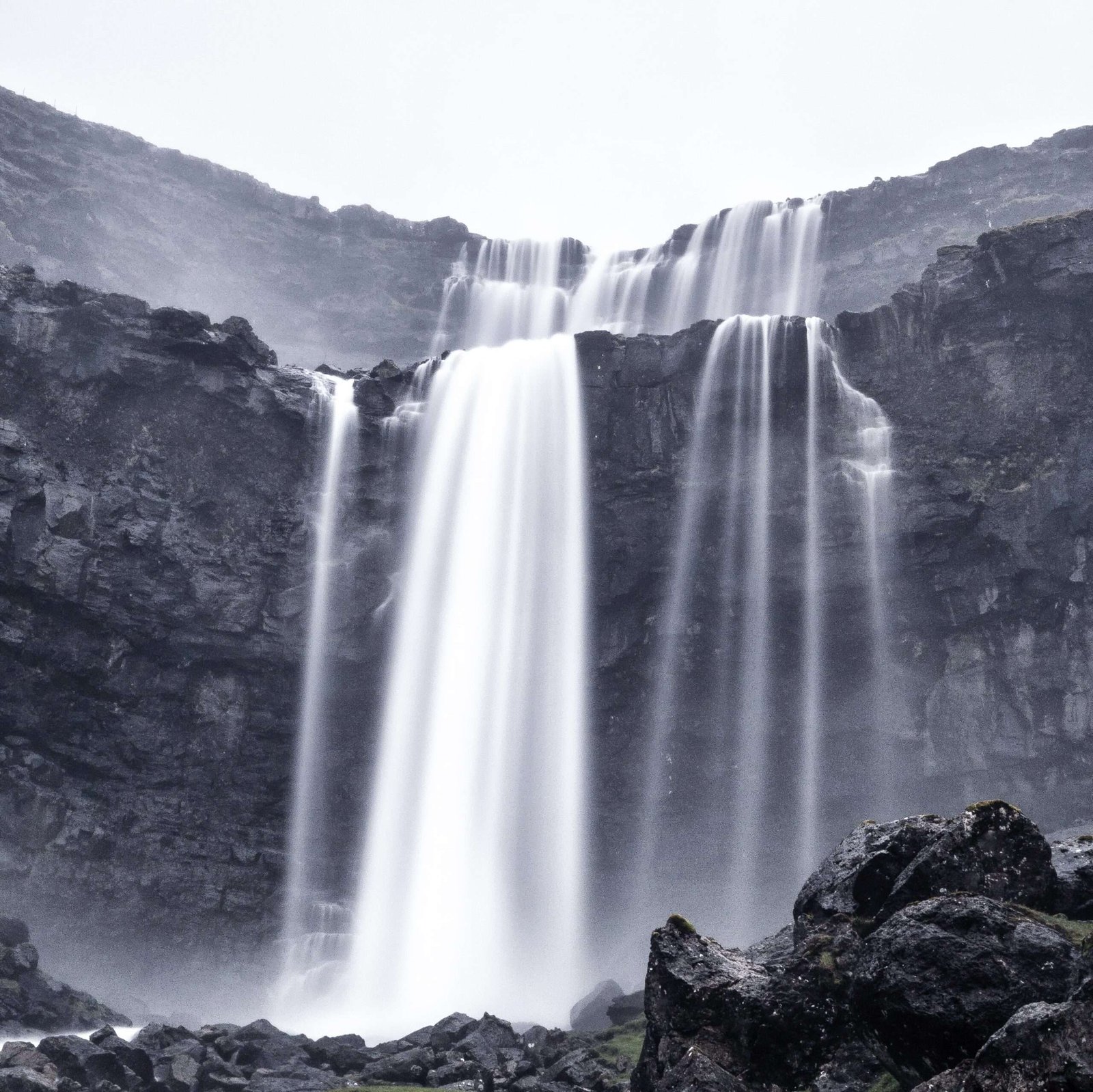
Fossá Waterfall
🧠 Fact: The tallest waterfall in the Faroe Islands, plunging 140 meters in two stages.
💡 Tip: Wear waterproof clothing; the mist from the falls can be quite heavy.
Info - Fossá is the tallest waterfall in the Faroe Islands, with a two-tiered cascade tumbling 140 meters down a rugged cliff near Haldarsvík on Streymoy. The name literally means "river with waterfalls," and its powerful, misty descent is a captivating sight, especially after rainfall. A short walk leads to the base, where visitors can feel the spray and hear the thunderous roar of the water. It’s one of the island’s most accessible and rewarding natural attractions, perfect for photography and picnics.
- 📍 Faroe Islands
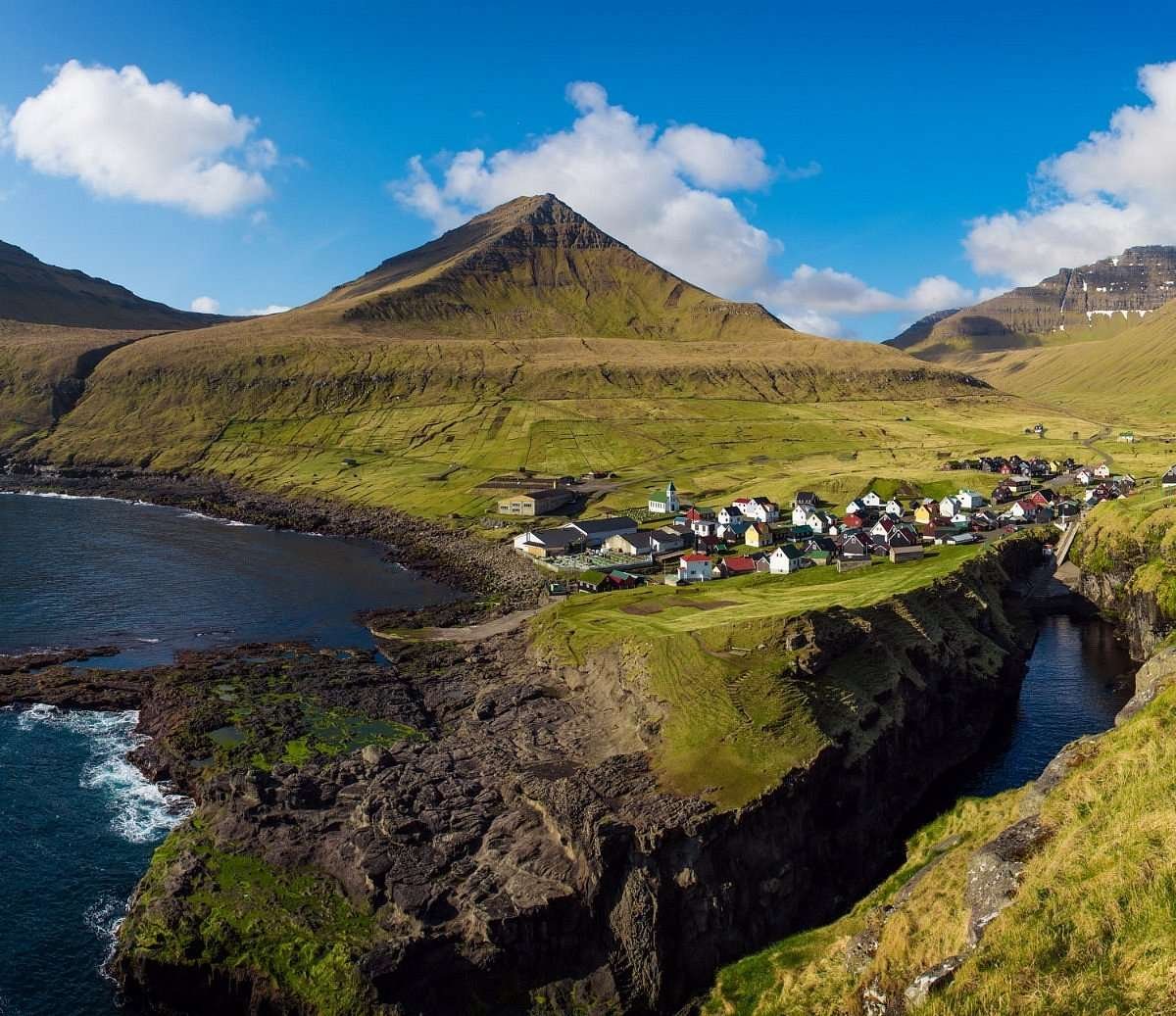
Gjógv
🧠 Fact: A charming village named after its 200-meter-long sea-filled gorge.
💡 Tip: Explore the surrounding hiking trails for stunning coastal vistas.
Info - Gjógv, meaning “gorge” in Faroese, is a tiny coastal village named for the natural sea-filled ravine cutting through its cliffs. Located on Eysturoy’s northeast coast, Gjógv is known for its traditional turf-roofed cottages and dramatic natural harbor. A gentle hike from the village leads to breathtaking clifftop views of the Atlantic and neighboring islands. It’s a peaceful, photogenic spot where puffins nest in season, and the combination of vivid green slopes and wild coastline defines the Faroese landscape.
- 📍 Faroe Islands
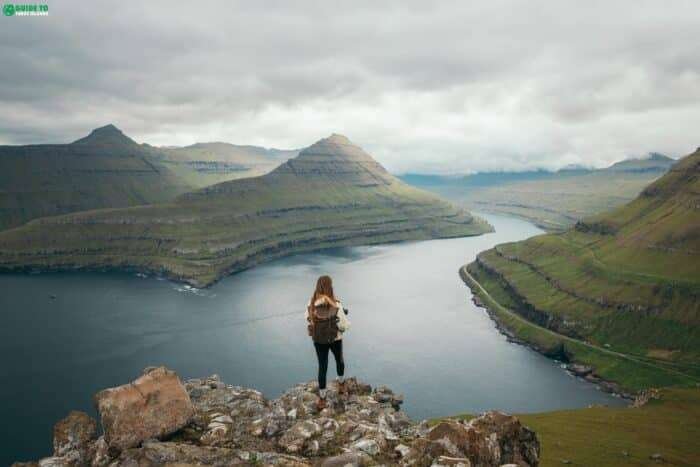
Hvíthamar
🧠 Fact: : A vantage point offering panoramic views over the Funningsfjørður fjord.
💡 Tip: A short hike from the Gjáarskarð mountain pass leads to this breathtaking viewpoint.
Info - Hvíthamar is a cliffside viewpoint above the village of Funningur, offering one of the most stunning panoramas in the Faroes. From here, hikers are rewarded with sweeping views of the fjord below, encircled by green-clad mountains and punctuated by glimmering waters. The short, steep hike to the viewpoint is well worth the effort for its cinematic scenery and tranquility. It’s especially atmospheric at sunset, when the light bathes the landscape in gold and mist rolls through the valley.
- 📍 Faroe Islands
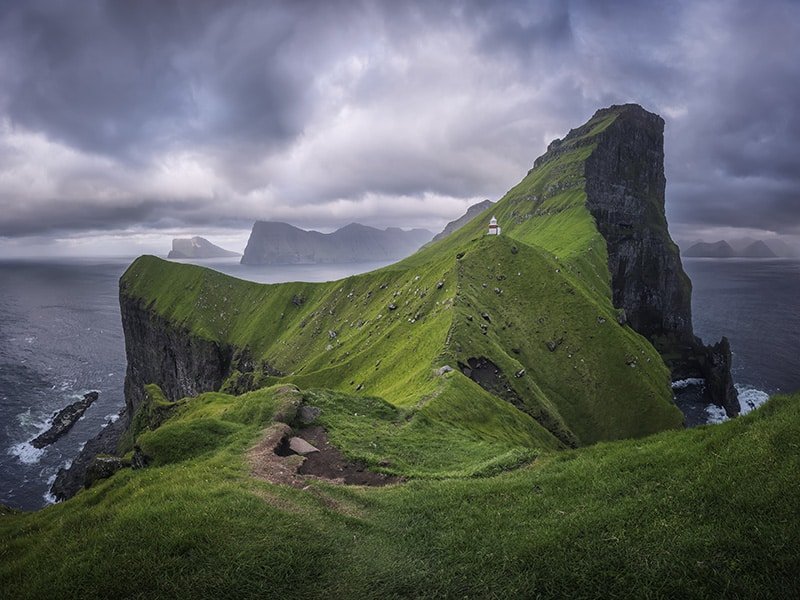
Kalsoy & Kallur Lighthouse
🧠 Fact: Home to the iconic Kallur Lighthouse, offering panoramic views of the surrounding islands.
💡 Tip: The hike to the lighthouse is moderately challenging; wear sturdy footwear and be prepared for changing weather conditions
Info - Kalsoy, often called the “Flute Island” for its narrow, elongated shape, is famed for its dramatic cliffs and the picturesque Kallur Lighthouse. A hike to the lighthouse offers one of the Faroes’ most celebrated views — the tiny beacon perched atop a grassy ridge with sheer drops to the Atlantic on either side. The island’s scenery is wild and hauntingly beautiful, and its villages feel untouched by time. Kalsoy is also steeped in folklore, including the tale of the seal-woman of Mikladalur.
- 📍 Faroe Islands
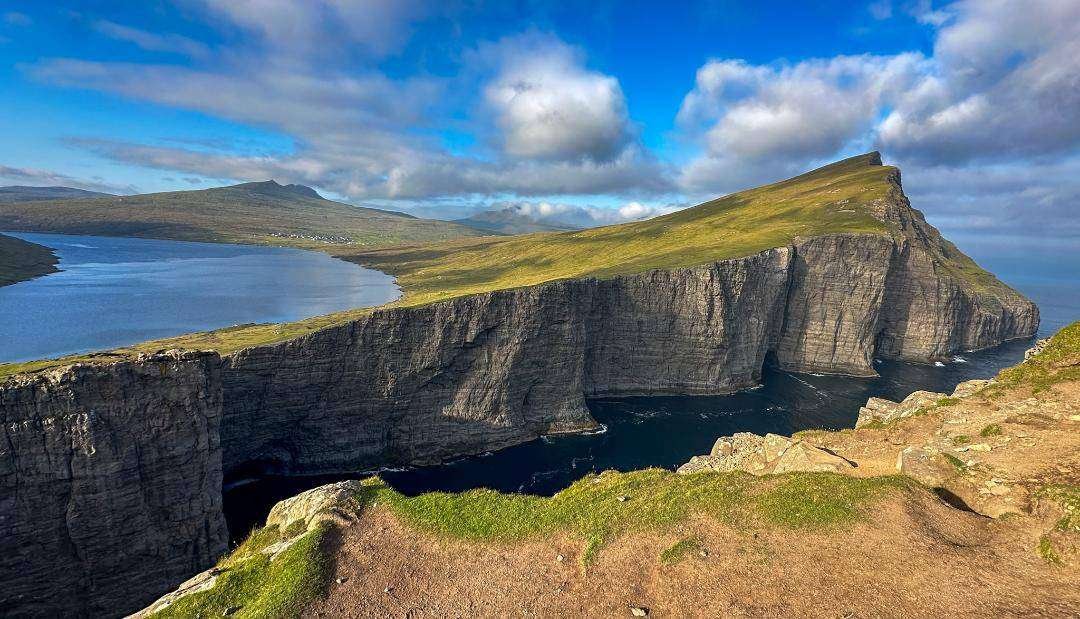
Lake Sørvágsvatn & Trælanípa (Slave Cliffs)
🧠 Fact: Lake Sørvágsvatn appears to hover above the ocean due to an optical illusion; nearby Trælanípa offers dramatic cliff views.
💡 Tip: Embark on the hike to Trælanípa for the best perspective of the floating lake illusion.
Info - Lake Sørvágsvatn, the largest lake in the Faroes, appears to hover above the ocean when viewed from Trælanípa — the sheer Slave Cliffs. This famous optical illusion is a product of perspective, making the lake seem dramatically elevated above the sea. A scenic hike leads visitors along cliff edges with panoramic views of the Atlantic, neighboring islands, and the towering cliffs themselves. According to legend, Trælanípa was once where Viking chieftains hurled their disobedient slaves into the sea.
- 📍 Faroe Islands
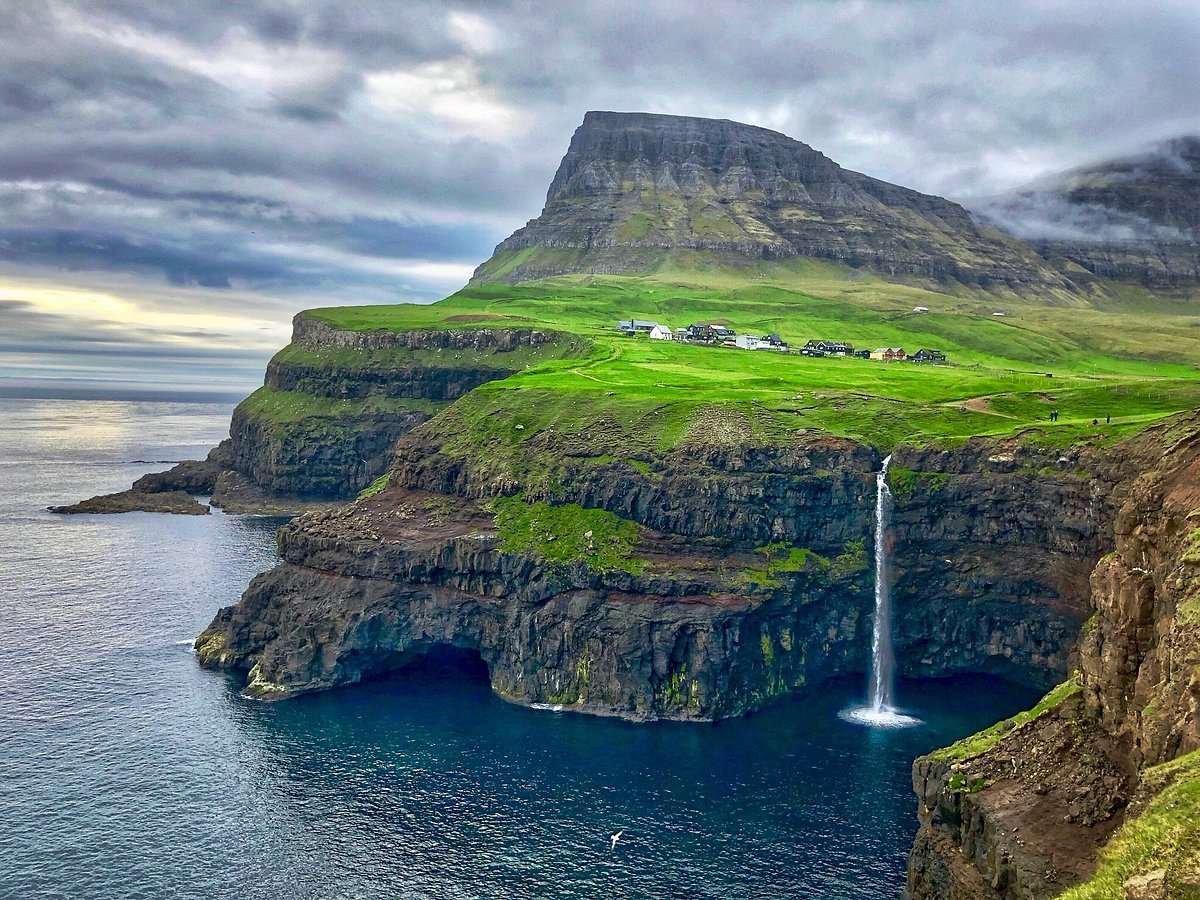
Múlafossur Waterfall & Gásadalur
🧠 Fact: A stunning waterfall that cascades directly into the ocean, located near the village of Gásadalur.
💡 Tip: : Visit during sunset for breathtaking views and optimal photography conditions.
Info - Tucked into the remote village of Gásadalur, Múlafossur Waterfall is one of the Faroe Islands' most iconic sights. Here, a pristine stream plunges dramatically into the Atlantic, framed by steep cliffs and rugged coastal scenery. The village itself, once accessible only by mountain trail or boat, feels untouched by time. A modern tunnel now connects Gásadalur to the rest of Vágar island, but its tranquility remains. The setting is otherworldly, especially when mist rolls in, blurring the lines between sea, sky, and land.
- 📍 Faroe Islands
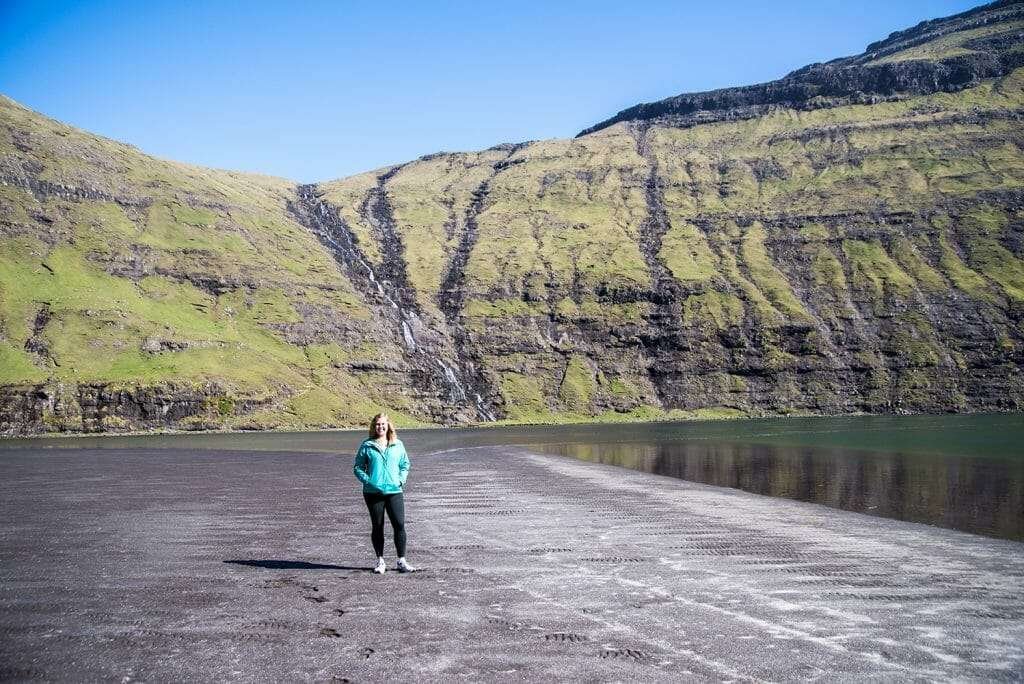
Saksun & Black Sand Beach
🧠 Fact: A picturesque village nestled in a natural amphitheater with a stunning black sand beach.
💡 Tip: Check tide schedules before visiting, as the beach is best explored during low tide.
Info - Saksun is a tiny, postcard-perfect village set in a lush valley surrounded by towering mountains and overlooking a tidal lagoon that leads to a black sand beach. This is one of the Faroes’ most serene and photogenic spots, with traditional turf-roofed houses and a 19th-century church adding to its charm. The walk down to the beach at low tide reveals dramatic coastal scenery and the meeting point of river, lagoon, and ocean. It’s an atmospheric, timeless corner of the islands.
- 📍 Faroe Islands
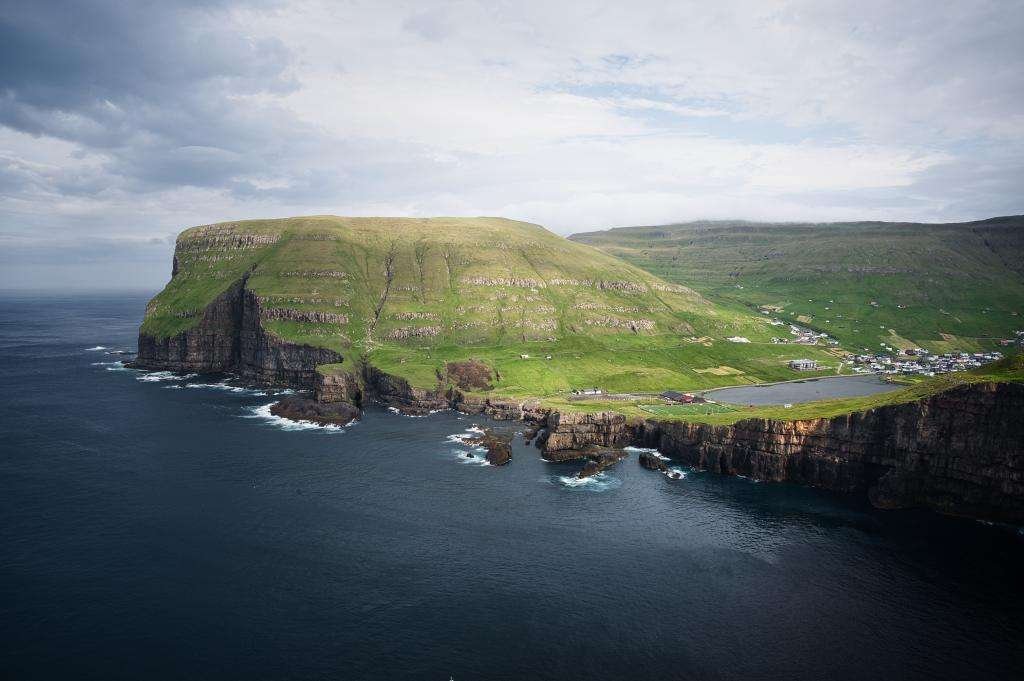
Suðuroy (Southernmost Island
🧠 Fact: Known for its rugged landscapes, bird cliffs, and rich cultural history.
💡 Tip: Take the ferry from Tórshavn to explore this less-visited gem
Info - Suðuroy, the southernmost of the Faroes, is a rugged and lesser-visited gem with towering cliffs, dramatic headlands, and charming villages. Highlights include the sea cliffs of Beinisvørð, colorful towns like Tvøroyri and Vágur, and the striking rock formations at Eggjarnar. Known for its rich birdlife, remote hiking trails, and dramatic seascapes, Suðuroy feels wilder and more isolated than the northern islands. A ferry ride away from Tórshavn, it rewards visitors with raw, untouched scenery and authentic local culture.
- 📍 Faroe Islands
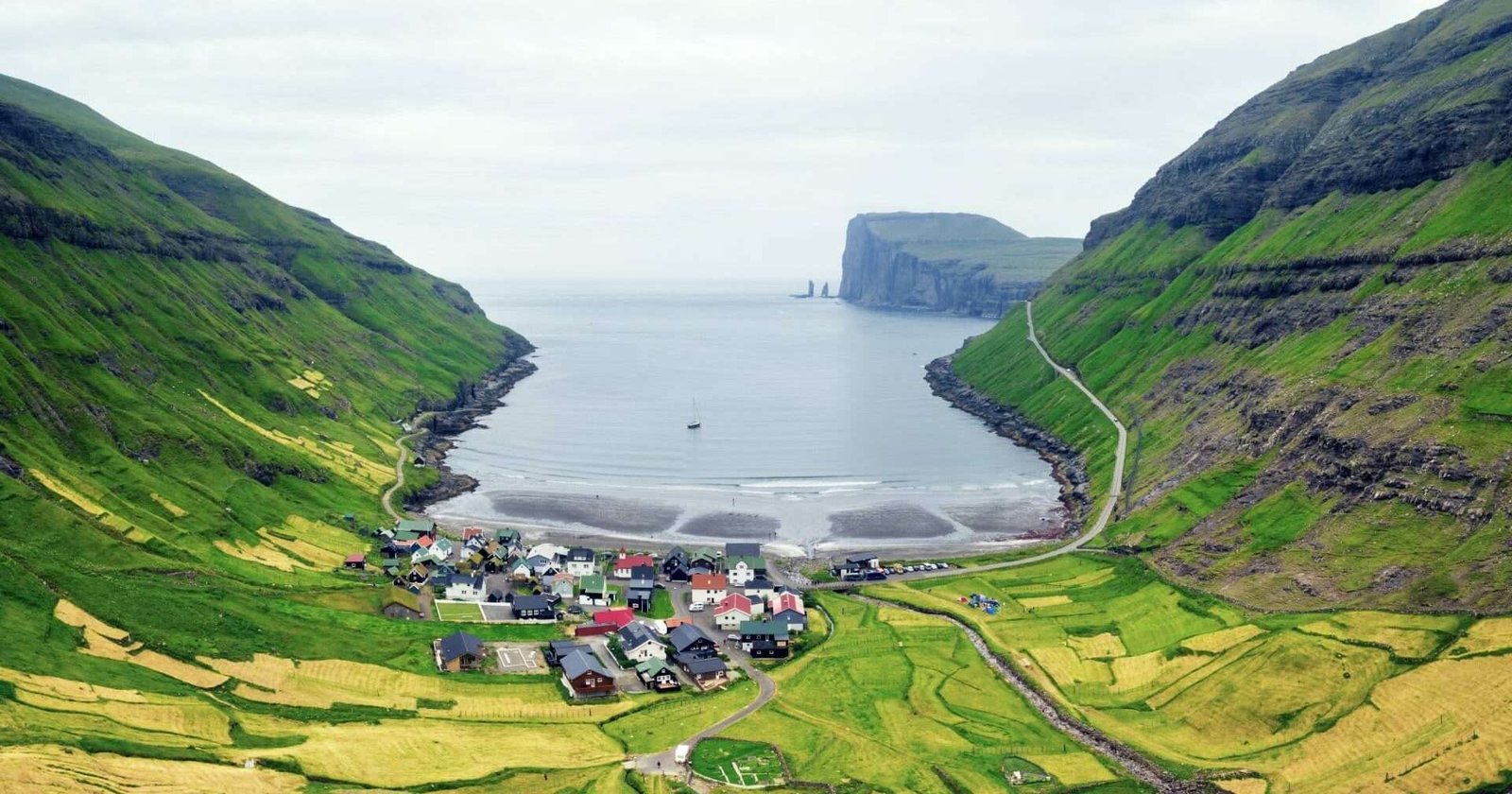
Tjørnuvík
🧠 Fact: One of the oldest villages in the Faroe Islands, known for its scenic beach and views of the Risin and Kellingin sea stacks.
💡 Tip: Ideal for surfing; beginners should consult local guides for safety.
Info - The charming village of Tjørnuvík, at the northern tip of Streymoy, is famous for its black sand beach and panoramic views of the towering Risin og Kellingin sea stacks. Backed by steep mountains, this small settlement offers one of the Faroes’ most picturesque settings. The beach is popular with surfers brave enough for the cold Atlantic waves, while the surrounding hiking trails reveal sweeping vistas of cliffs and ocean. Tjørnuvík perfectly captures the islands’ mix of remote beauty and Norse legend.
- 📍 Faroe Islands
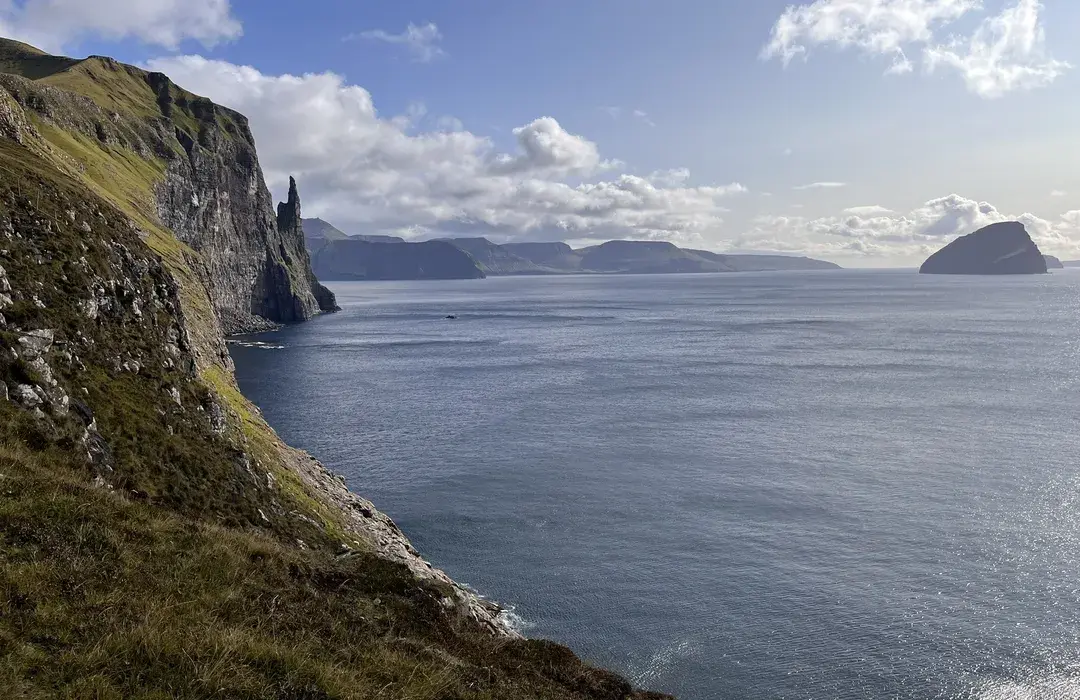
Trøllkonufingur (Witch’s Finger)
🧠 Fact: A 313-meter-high monolith named after a legend involving a witch attempting to throw the Faroe Islands to Iceland
💡 Tip: Best viewed from the village of Sandavágur; bring binoculars for a closer look.
Info - Trøllkonufingur, or the Witch’s Finger, is a striking 313-meter-tall rock pillar jutting skyward from Vágar’s rugged coastline. Legend says it was once a witch attempting to strike down the islands before being turned to stone by the sunrise. Today, it stands sentinel over the ocean, captivating visitors with its eerie, solitary presence. Accessible via hiking trails from Sandavágur, the views here are exceptional, with sweeping vistas of fjords, cliffs, and open sea — a perfect blend of Faroese myth and raw, natural drama.
- 📍 Faroe Islands
